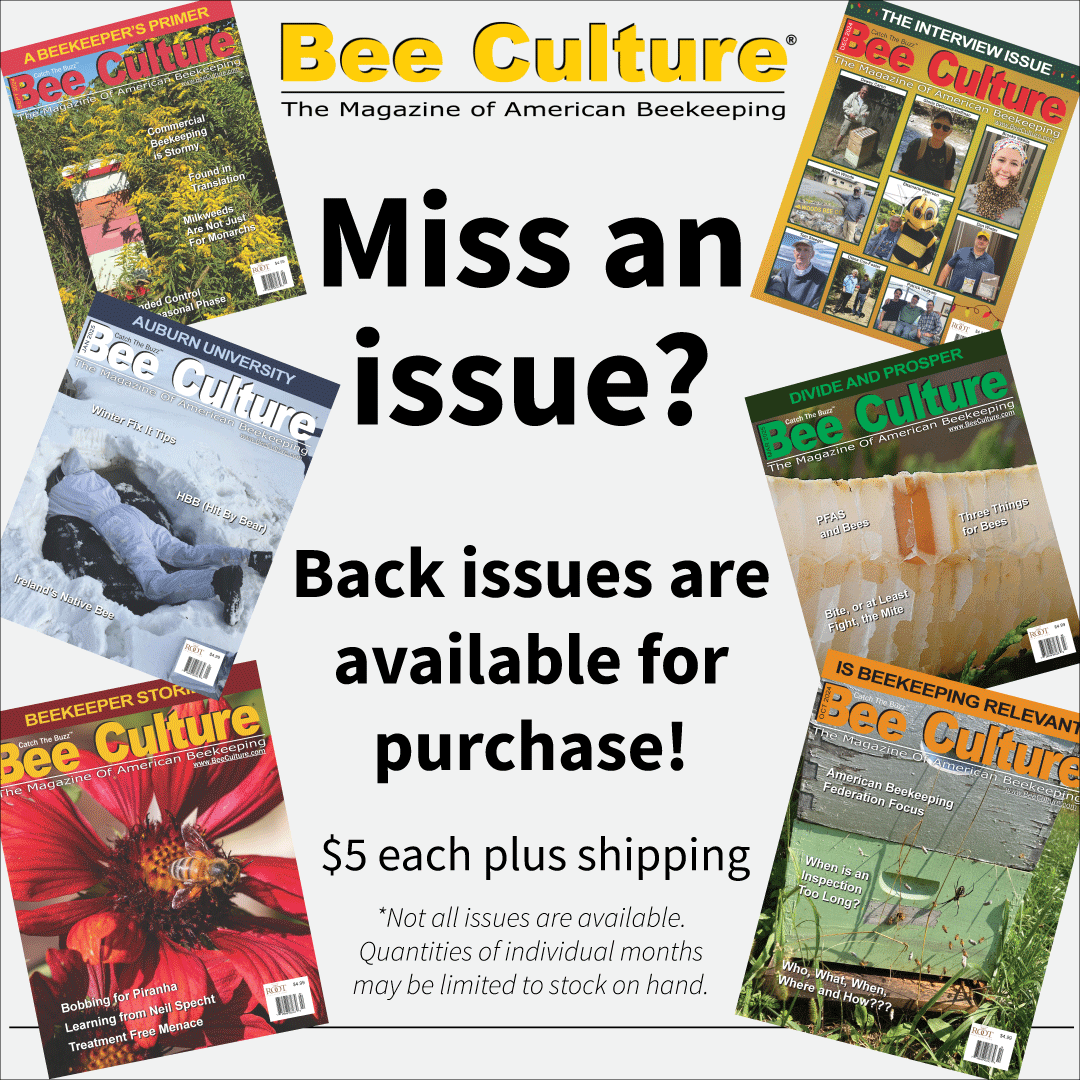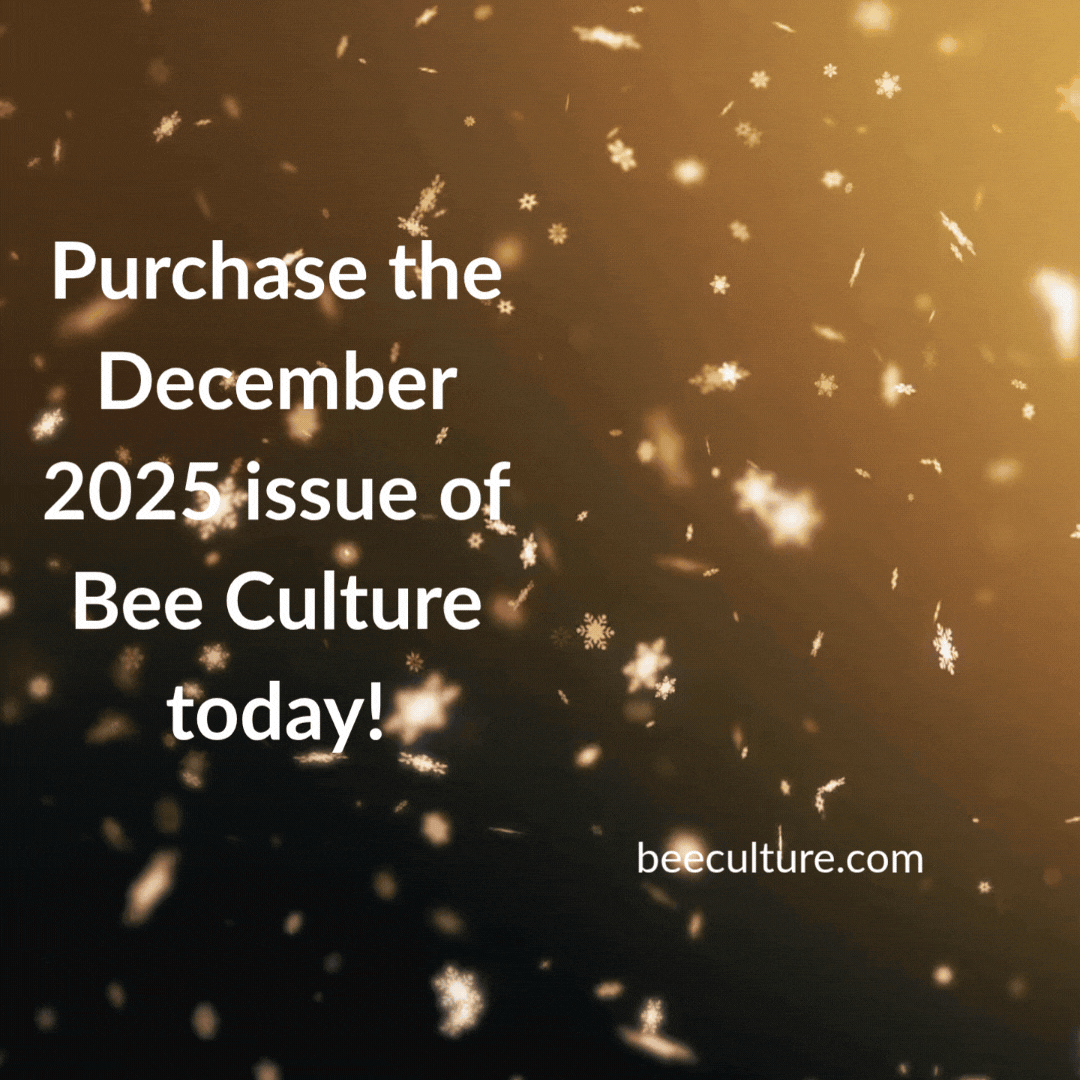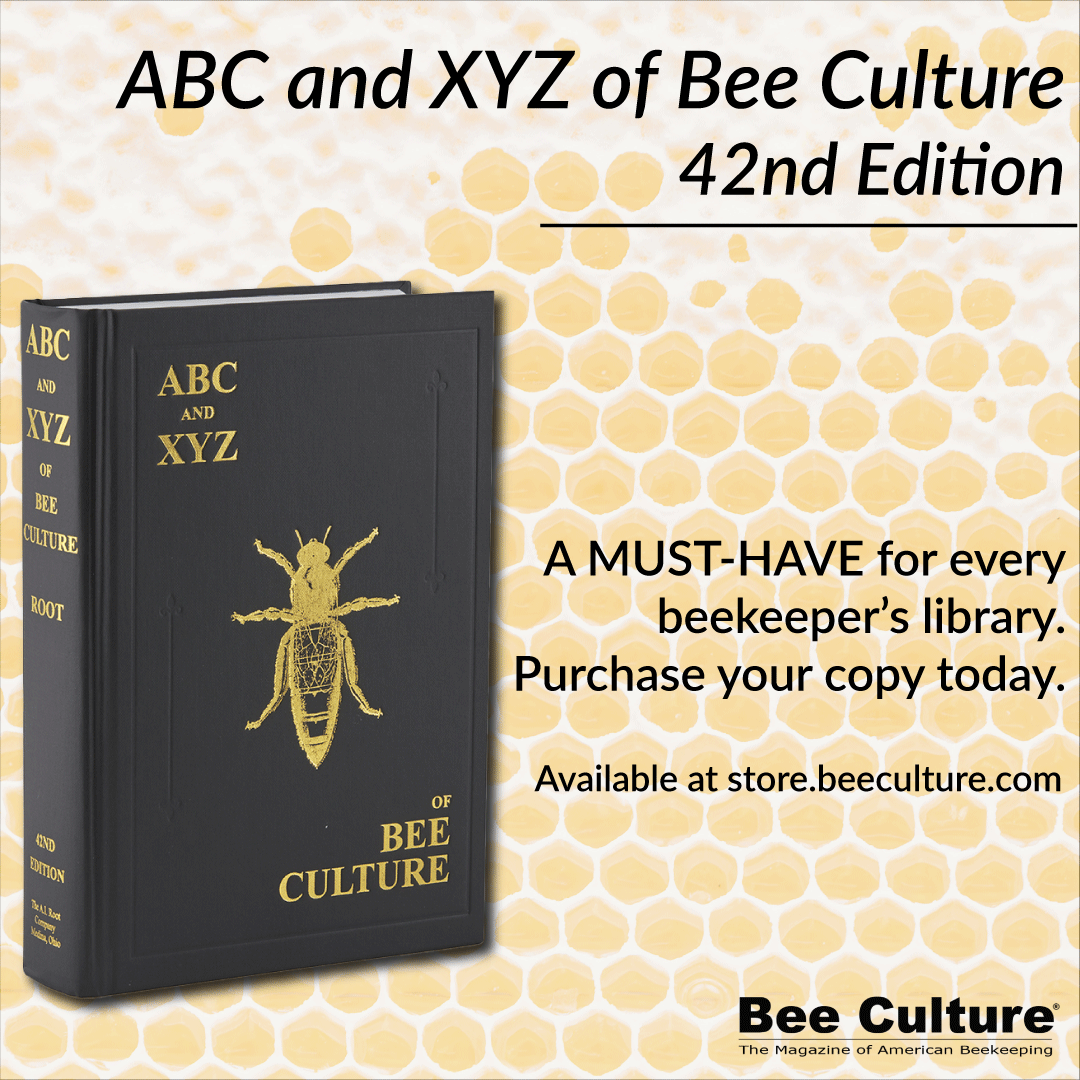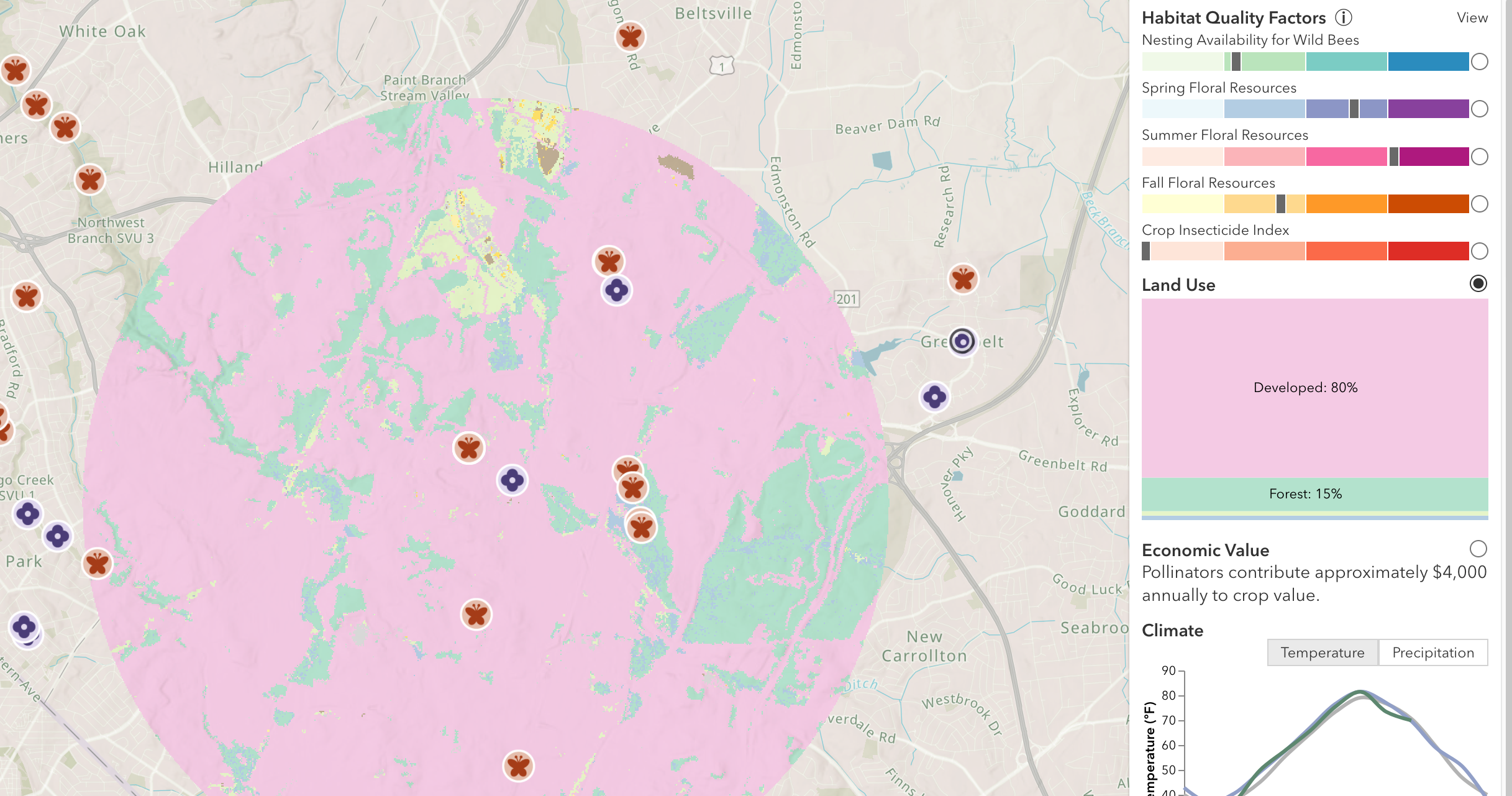Click Here if you listened. We’d love to know what you think. There is even a spot for feedback!
Read along below!

Becky Masterman earned a PhD in entomology at the University of Minnesota and is currently a host for the Beekeeping Today Podcast. Bridget Mendel joined the Bee Squad in 2013 and led the program from 2020 to 2023. Bridget holds a B.A. from Northwestern University and an M.F.A. from the University of Minnesota. Photos of Becky (left) and Bridget (right) looking for their respective hives. If you would like to contact the authors about sting stories, please send an email to mindingyourbeesandcues@gmail.com.
This Might Sting Part 1
By: Becky Masterman & Bridget Mendel
Bee Venom
If the rose is symbolic of beauty and suffering, the honey bee doubles down by delivering extreme sweetness and pain. If you go after that honey, you might get some stings along the way. And stings are supposed to hurt, but for the most part beekeepers see getting stung as a reasonable price to pay for the joys of beekeeping. As mentors to new beekeepers, we encourage this attitude: you can’t be an excellent beekeeper if you are preoccupied with avoiding stings: if you are totally suited up, you can’t read your bees very well (ouch! they are mad!) and can end up handling equipment roughly. We’re all about gentle beekeeping and accepting the stings. And anyway, in Minnesota there’s only so much time to get a tan, so arms out it is.
But what about folks who are actually allergic to bee venom? A “normal” reaction to a sting is redness, inflammation and itchiness, occasional achiness, and some swelling past the sting site possibly warranting, depending on the location, a photo to your favorite social media site. That is the venom being venomous.
But bee venom allergies, which are rare, are more serious. And weirdly, beekeepers are more likely to develop them than other groups. Maybe surprisingly for some, it turns out that how many stings you receive each year and how frequently those stings are delivered impacts whether you develop the allergy (summarized in Carli et al., 2024).
The following more serious and systemic sting symptoms are outlined on the USDA ARS website referenced below: hives; feeling nauseous or lightheaded; stomach cramps; vomiting; diarrhea; low blood pressure; and swelling in areas other than the sting site. Serious and life threatening anaphylactic reactions symptoms are: swelling of the mouth or throat; shortness of breath; difficulty in swallowing; cardiac arrest; and shock (a lack of blood flow to organs and tissues https://www.mayoclinic.org/first-aid/first-aid-shock/basics/art-20056620).
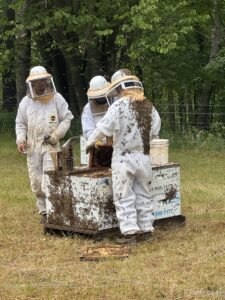
Commercial beekeepers sometimes can’t wait for the perfect bee weather day when their customers are expecting queens, packages and nucs. Photo credit: Dan Whitney.
Allergic reactions to venom have been associated with the number of stings beekeepers receive each year. In an early study, Bousquet et al. (1984) report that, “The annual number of stings is critical because when BKs (beekeepers) receive less than 25 stings a year, the sensitization is maximal, and when BKs receive more than 200 stings a year, the “desensitization” is optimal.” A recent study among Slovenian beekeepers found statistical significance in systemic reactions between beekeepers who received less than 50 stings per year and 51 stings or more (Carli et al., 2025).
The study of Slovenian beekeepers also explored additional risk factors that increased the likelihood of a systemic allergic reaction when stung. These risk factors included experiencing nasal symptoms while working in the hive and large localized reactions to stings (like getting stung in the hand but your forearm swells). Less informative but still interesting was a higher risk of developing a systemic allergic reaction if you are male and between the ages of 18-64 (beekeepers under 18 were not included).
Backyard beekeeping is the perfect set up to develop an allergic response to venom. The research review reported by Carli et al. (2024) reported the beekeeper’s overall lifetime self reported systemic allergic reaction at 23.7% with severe systemic allergic reactions at 6%.
If you are managing two honey bee colonies, gloveless, gentle beekeeping might not bring you to over 50 stings a year. Coupling the sting number with the seasonality of beekeeping, it isn’t surprising that allergies develop. Frequency of stings is also a risk factor for developing an allergic response to bee venom. A research report by Eich-Wanger & Mueller (1998) stated, “The majority of aBK (allergic beekeepers) first reacted shortly after starting bee-keeping, at a time when stings occurred more frequently than in their previous life. Many of the remaining indicated that the first reaction occurred after the Winter break, thus following a period of several months without stings during which protection may have waned.”
Carli et al (2024) reported that their analysis of bee venom allergy research revealed that many allergic beekeepers kept on beekeeping despite the medical recommendation to cease the activity. This definitely tracks and probably isn’t even the craziest thing our community does for the love of bees.
Recommendations to medical professionals treating allergic beekeepers included: emphasizing the importance of wearing full protective equipment during all beekeeping activities; utilizing self-medication including adrenaline autoinjectors in emergencies; and considering venom immunotherapy.
We would add that never beekeeping completely solo is a good idea for new and allergic beekeepers. If your social circle doesn’t include any reliable beekeepers, simply enlist a friend or relation to hover nearby, dronelike. This is especially important if your apiaries are quite remote, difficult to locate or communicate cellularly from. Beekeepers know that despite protective gear, stings happen. While the risk of severe allergic reactions is low, two beekeepers might be better than one when it comes to sting safety.
Next month, we’ll be investigating the positive benefits of bee venom! But for now, stay safe, and get stung often (or at least 51 times*).
*Please do not change your beekeeping practices without consulting a medical professional.
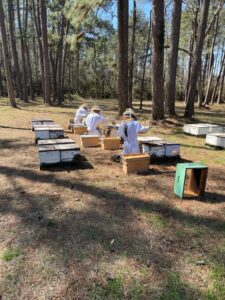
The number of honey bee colonies managed by commercial beekeepers translates into more stings. Over 200 stings per year have been associated with desensitization to bee venom. Photo credit: Dan Whitney.
Resources and References
Are you a beekeeper who wants to keep epinephrine handy in the case of an emergency, but doesn’t like needles? There’s a new epinephrine nasal spray called Neffy (https://www.neffy.com/about/). Check out the website for cost savings and the storage parameters (including high temperatures up to 122°F (50°C) for a few days).
The North American Pollinator Protection Campaign has put together a brochure titled “No Fear of Stings”.
https://www.pollinator.org/pollinator.org/assets/generalFiles/NAPPC.NoFear.brochFINAL.pdf
Bee Stings 101: USDA ARS
https://www.ars.usda.gov/pacific-west-area/tucson-az/carl-hayden-bee-research-center/docs/bee-safety/bee-stings-101/
Bilò, B. M. & Bonifazi, F. (2008). Epidemiology of insect-venom anaphylaxis. Current Opinion in Allergy and Clinical Immunology, 8 (4), 330-337. doi: 10.1097/ACI.0b013e32830638c5.
Blank, S., Haemmerle, S., Jaeger, T., Russkamp, D., Ring, J., Schmidt-Weber, C. B., & Ollert, M. (2019). Prevalence of Hymenoptera venom allergy and sensitization in the population-representative German KORA cohort. Allergo Journal International, 28(6), 183–191. https://doi.org/10.1007/s40629-018-0089-4
Bousquet, J., Ménardo, J.-L., Aznar, R., Robinet-Lévy, M., & Michel, F.-B. (1984). Clinical and immunologic survey in beekeepers in relation to their sensitization. Journal of Allergy and Clinical Immunology, 73(3), 332–340. https://doi.org/10.1016/0091-6749(84)90405-6
Carli, T., Locatelli, I., Košnik, M., Bevk, D., & Kukec, A. (2025). Epidemiology and Risk Factor Analysis of Systemic Allergic Reaction to Bee Venom in the Slovenian Population of Beekeepers. Zdravstveno Varstvo, 64(1), 40–48. https://doi.org/10.2478/sjph-2025-0006
Carli, T., Locatelli, I., Košnik, M., & Kukec, A. (2024). The prevalence of self-reported systemic allergic reaction to Hymenoptera venom in beekeepers worldwide: A systematic literature review and meta-analysis. Slovenian Journal of Public Health, 63(3), 152.
Eich-Wanger, C., & Mueller, U. R. (1998). Bee sting allergy in beekeepers. Clinical and Experimental Allergy, 28(10), 1292–1298. https://doi.org/10.1046/j.1365-2222.1998.00411.x
Park, H., Kim, S.-M., & Kim, W. Y. (2022). Cardiac Arrest Caused by Anaphylaxis Refractory to Prompt Management. The American Journal of Emergency Medicine, 61, 74–80. https://doi.org/10.1016/j.ajem.2022.08.035

